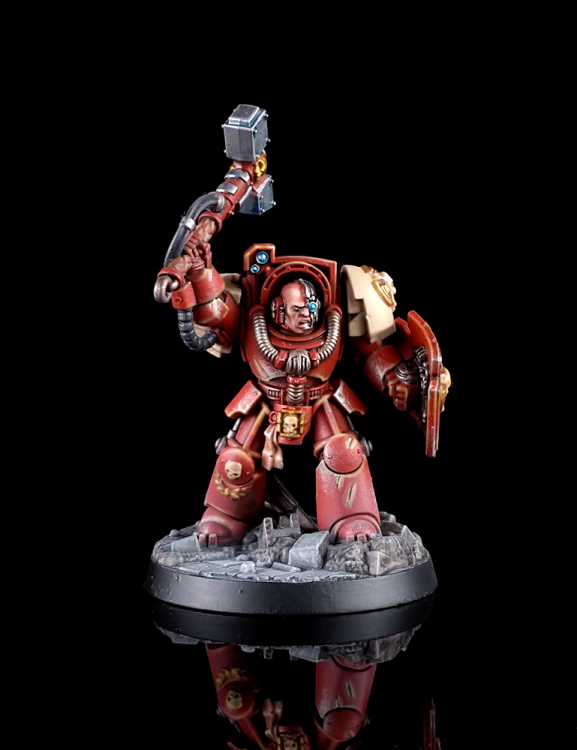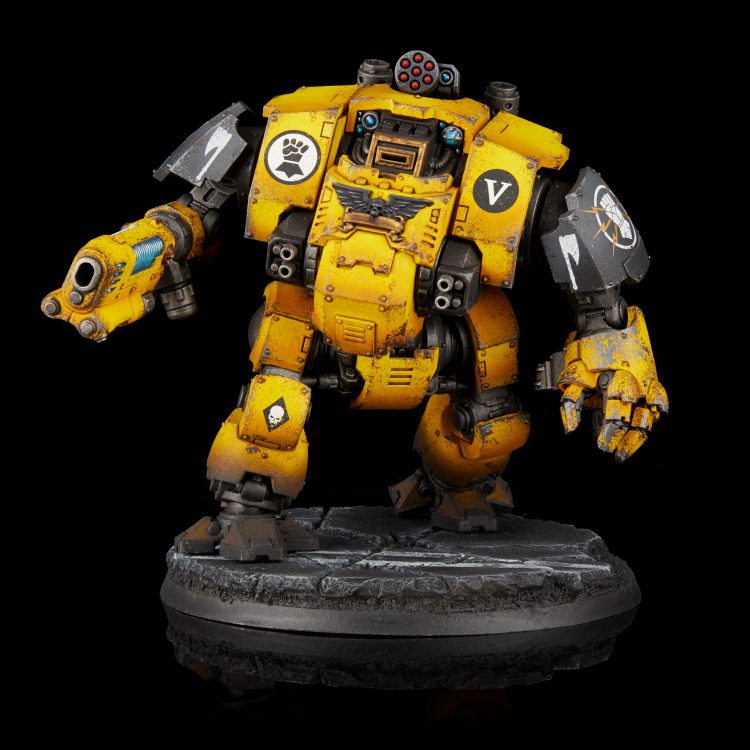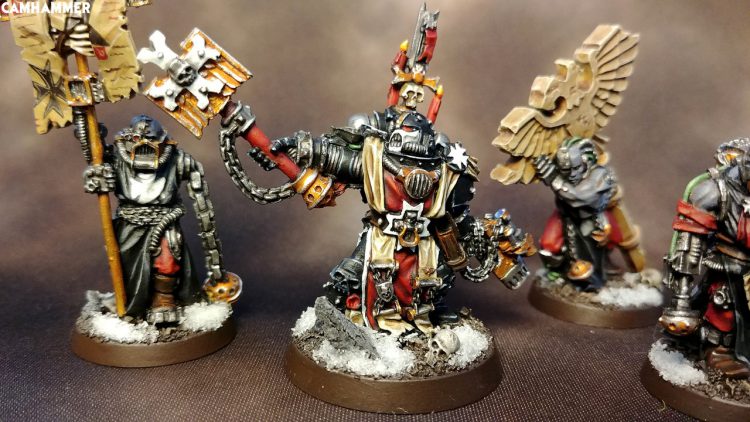This article is part of our series looking at Unit Roles in 9th Edition. If you’ve just arrived, you might want to go check out the Introduction, which talks through what this series is about and how it’s going to work. Otherwise, read on.
Units in 9th Edition can usually be grouped into one of six roles, four “Primary” Roles and two “Secondary” Roles. The Primary Roles are crucial building blocks from which effective strategies are constructed, while units from Secondary Roles can either amplify the capabilities of other units or broaden the scoring options available to a list.
The roles are:
- Primary Roles:
- Position Holders
- Brawlers
- Elimination
- Attrition
- Secondary Roles:
- Objective Utility
- Force Multiplier
We will be running five articles that will be diving in to one or more roles, one each for the Primary Roles, then a joint piece for the Secondary Roles at the end. For each role, we’ll talk about what it is and how it’s used, some examples of standout units from it and how to play against it in the table. For each Primary Role, we’ll also take a look at a competitive army list that uses that role as the foundation of its strategy.
This is the second of those five articles, taking a look at the Brawler role.
Primary Role – Brawlers

What They Were in 8th
Push Threats, Tarpits, Board Control
What They Are
Brawlers are all-rounder close engagement units that can get stuck in wherever needed to maintain your control of the objective game. The best of them mix mid-high damage output with mid-high durability, because for them to perform effectively you want them to be able to charge in and expect:
- To sweep away Position Holder units.
- To inflict appreciable damage on almost anything else.
- To be able to survive the counterpunch of whatever they’re going into, and soak up a reasonable amount of punishment if your opponent wants to shift them.
They should also be deadly enough that your opponent charging into them without sufficient damage to take them out will cost them dearly, and relatively self-sufficient – you want to be able to call on them to attack a position without the main body of your force necessarily having to follow them.
This role is something 9th has really brought into its own – shorter games and the increased challenge of holding objectives massively increased the value of having flexible units that can rock in to whatever fight they’re needed in, then force your opponent to invest serious resources to take down. This is helped by the fact that in general you’re less likely to run into armies that are just all-in on an Elimination plan, which played a big part in suppressing this kind of unit in 8th. These rack up value when both players are engaging in fighting for board control, and because 9th essentially forces all players to do that, this kind of unit is very valuable.
Like the first two roles, there are subdivisions within Brawlers, and here the dividing line tends to be whether a given unit excels more at durability, leaning twards pulling double duty as an Attrition or Position Holder unit, or favours mobility and spike damage, in which case they can blur into being Elimination units when the situation calls for it. Whichever end of the spectrum they land at, to be a true Brawler they should be tough enough that your opponent needs to break out their Elimination threats to quickly kill them, and dangerous enough that you’d be willing to take a swing at most enemy brawlers with them.
In terms of how they feed into game plans, Brawlers can enable you to sustain engagements across multiple parts of the table for the full length of the game, giving you a big leg-up in fighting for Primary scoring. They also dominate sections of the table until they’re dealt with – opponents can’t safely move many Position Holder units into the threat range of these, meaning that until they can spare the Elimination resources to remove them, that part of the board is off limits – a big plus for you. If you can land a surgical strike on the units that threaten them, Brawlers also provide another route to snowballing a victory – these are arguably the best kind of units to really capitalise on a strong start, and being able to lock down games that tilt in your favour is vital to achieving consistent success.
Examples

- Anything in Terminator Armour: 9th is the Edition of the Brawler, and armies that can throw down models in tactical dreadnought armour are reaping some of the biggest rewards. From the more Elimination-skewed Emperor’s Children lightning claw builds through to the Tarpit/Attrition end of things with Blightlords, big units of increibly burly men rolling around the table punching stuff is a common sight in 9th.
- Boyz: Entirely appropriately, Ork Boyz are extremely good at a role that involves rolling around the table between objectives punching stuff to death. Here the durability comes from the numbers and the threat of Green Tide, and you sometimes have to switch gears to treating them as Position Holder units if your opponent has too many 2+ saves, but Brawling is their passion and the default behaviour against most lists.
- Keeper of Secrets: Fast, deadly and hard to stop, Keepers can rocket round the board and get stuck in against a wide variety of targets with relative impunity.
- Bullgryn: Being short of Brawlers tends to be a serious strike against the competitiveness of an army in 9th, so it’s good news for guard that their sole genuine entrant into this category recently got a major price cut. Drop a bunch of powers and strats on them and go hog wild.
How to Respond
Dealing with Brawlers is all about timing and proper resource allocation. Brawlers build up their value when they can start to do their thing in an area of the board you’re actively interested in fighting for, but if they’re on the wrong side of the table or out of charge distance, then they’re potentially a problem you can afford to wait for a future turn to deal with.
When you do decide to deal with them, however, you need to make sure you commit with sufficient force that you land the kill, especially if you’re using melee units to do it. They’re generally statted to punish units that charge into them and don’t finish them off, and even if you’re not directly getting into a punch up, the turn you swing at them is often a turn in which you’ll move some Position Holder prey into their threat range. If you do that then flub the kill, they get to counterattack and do a bunch of damage, a disaster for you. Make sure you bring the right Elimination threats (or Brawlers of your own) to bear to make sure that doesn’t happen.
The other specific thing to watch out for this these is how the opponent’s match up with your own. If the Brawler units they’ve brought will generally beat yours in a fight, then they need to be high up your Elimination priority – because as long as they’re alive, your units aren’t going to be able to play the kind of muscular game you really want from this role for fear of a counterattack. Assessing and understanding when this is the case is vital, and it’s also why some particularly extreme Brawlers (e.g. Deathwing Knights) can be so good, because they can shut down opposing tools. If you see this kind of mismatch, either lock and load with your nastiest killers, or send your own Brawlers off to play in a different part of the table.
Brawlers in Practice

Brawlers’ big strength is that they’re very flexible, and much more than any of the other Primary Roles they let you adapt on the fly. Once you’ve got them into the mid-board, they can make plays for pretty much any objective that’s within strike range, discourage weaker opposing units from coming into their area of influence, and line up against opposing threats, buying the rest of your army time to do their thing. Because of that, it’s very difficult to go wrong with slotting a few powerful Brawler units into almost any build, and it’s very notable that there’s an extremely strong correlation between Codexes that are relatively weak at filling this role and those languishing at the bottom of the tier list. 9th Edition comes at you fast, and putting these units in your army means you can take whatever it throws at you. Even for factions with exceptionally powerful Position Holder and Elimination units like Sororitas, you see builds that pack in their strongest Brawler unit (Mortifiers) at least reasonably frequently.
The adaptability of Brawlers also means that, as long as you have good choices in the slot, it’s very difficult to go wrong by packing large numbers of them. In fact, a list that looks something like the following is very close to a “default” recipe for a strong 9th Edition army:
- A few Pawn Position Holders to initiate an engagement in the mid board when required.
- A few Elimination threats.
- Everything else Brawlers or relevant Force Multipliers.
Space Marines and Chaos tend to build the strongest Brawler heavy lists, thanks to their access to Terminator Armour, Dreadnoughts (especially Redemptors) and pretty much the entire Slaanesh Daemon lineup. We’re going to take a look at an especially brawly Black Templar list to show this off.
Luke Pearce’s Black Templars
This list took 4th place at the Adelaide Uprising major.
2000Pts Black Templars
12-7 = 5 CP Starting
++ Vanguard Detachment -3CP (Adeptus Astartes – Black Templars) [90 PL, -4CP, 1,570pts] ++
Relics of the Chapter [-1CP]: Number of Extra Relics
+ HQ +
Chaplain Grimaldus [5 PL, 95pts]: 3. Exhortation of Rage, 6. Canticle of Hate (Aura), Litany of Hate
Primaris Chaplain on Bike [7 PL, 140pts]: 1. Litany of Divine Protection, 5. Fervent Acclamation, Ancient Breviary (-1CP), Chapter Command: Master of Sanctity, Litany of Hate
+ Elites +
Redemptor Dreadnought [9 PL, 180pts]: 2x Fragstorm Grenade Launchers, Macro Plasma Incinerator, Onslaught Gatling Cannon
Redemptor Dreadnought [9 PL, 180pts]: 2x Fragstorm Grenade Launchers, Macro Plasma Incinerator, Onslaught Gatling Cannon
Terminator Assault Squad [18 PL, 233pts]: Teleport Homer
. Assault Terminator Sergeant
. . Thunder Hammer & Storm Shield: Thunder hammer
. 2x Assault Terminator w/THSS: 2x Storm shield, 2x Thunder hammer
. 3x Assault Terminator w/x2LC: 3x Lightning Claw (Pair)
Vanguard Veteran Squad [14 PL, 257pts]: Jump Pack
. Vanguard Veteran: Astartes Chainsword, Storm shield
. Vanguard Veteran: Astartes Chainsword, Storm shield
. Vanguard Veteran: Astartes Chainsword, Storm shield
. Vanguard Veteran: Astartes Chainsword, Storm shield
. Vanguard Veteran: Astartes Chainsword, Storm shield
. Vanguard Veteran: Power fist, Storm shield
. Vanguard Veteran: Power fist, Storm shield
. Vanguard Veteran: Power fist, Storm shield
. Vanguard Veteran Sergeant: Power fist, Storm shield
Vanguard Veteran Squad [14 PL, 265pts]: Jump Pack
. Vanguard Veteran: Astartes Chainsword, Storm shield
. Vanguard Veteran: Astartes Chainsword, Storm shield
. Vanguard Veteran: Astartes Chainsword, Storm shield
. Vanguard Veteran: Astartes Chainsword, Storm shield
. Vanguard Veteran: Power fist, Storm shield
. Vanguard Veteran: Power fist, Storm shield
. Vanguard Veteran: Power fist, Storm shield
. Vanguard Veteran: Power fist, Storm shield
. Vanguard Veteran Sergeant: Power fist, Storm shield
+ Fast Attack +
Inceptor Squad [14 PL, 220pts]: 3x Inceptor, Inceptor Sergeant, Plasma Exterminator x2
++ Patrol Detachment 0CP (Imperium – Adeptus Astartes – Black Templars) [23 PL, -3CP, 430pts] ++
Relics of the Chapter [-1CP]: Number of Extra Relics
+ HQ +
Captain on Bike [8 PL, -1CP, 140pts]: Astartes Chainsword, Chapter Command: Chapter Master, Master of the Codex, Stratagem: (-1CP) Hero of the Chapter, (-1CP) Teeth of Terra
Lieutenants [4 PL, -1CP, 75pts]
. Lieutenant in Reiver Armour: Rites of War, (-1CP) Stratagem: Hero of the Chapter, The Crusader’s Helm (Free relic)
+ Troops +
Infiltrator Squad [6 PL, 120pts]
. 4x Infiltrator: 4x Bolt pistol, 4x Frag & Krak grenades, 4x Marksman bolt carbine
. Infiltrator Sergeant
+ Elites +
Primaris Apothecary [5 PL, 95pts]: Chapter Command: Chief Apothecary, Selfless Healer, Warlord
++ Total: [113 PL, -7CP, 2,000pts] ++
How it Works
Like most Brawler-heavy builds, the basic answer to that question is “it rampages”. The list packs a single unit of Infiltrators to either threaten the mid-board or hold the backfield, a single Inceptor squad as an Elimination threat to take down anything especially threatening, then dumps all the rest of its points into units that can Brawl and characters that will make them extra effective. The Terminators and VanVets can both do serious damage to almost any target, and the Redemptors are comfortable challenging most things (and add value by being able to provide some additional weight of fire as well), and the powerful Black Templar stratagems of Devout Push and Tenacious Assault let the Brawler units dictate the terms of engagement in a way bound to cause additional headaches for the opponent. Devout Push in particular is the perfect Brawler stratagem, as it can essentially function as any of a Heroic Intervention, an Advance/Charge or a Fall Back/Charge. Since so much of their strength comes from flexibility and the impact they have on how the opponent can play, it’s no surprise that this ability works well with them.
The character backup is an important part of the build too. The Chaplains help to keep the units in the fight and extra deadly (and Canticle of Hate combos even further with Devout Push), while the Chapter Master shows off the Force Multiplier ability to flex between augmenting an Elimination threat and one of the Brawlers as the situation dictates. The Reiver Lieutenant is probably the biggest direct assist to the Brawlers though, thanks to Rites of War handing them Objective Secured. ObSec isn’t mandatory for Brawlers, and a lot of the best options across the game don’t have it, but it’s incredibly powerful when you can get access to it, as it means if you’re in a prolonged engagement with opposing Brawlers the scoring tips in your favour (and these units tend to sweep away enemy ObSec MSUs). Marines having both good units in the role and access to Rites of War is a major source of their strength. Any character could carry that around, of course, but the Reiver Lieutenant takes that even further – thanks to the Terror Troops strategem he can switch on an aura of disabling enemy ObSec (here boosted by the Crusader’s Helm), and that allows the list to decisively lock in objective control at a key point in the game. Since it will comfortably triumph in a prolonged mid-table engagement, having that option to tilt the scoring while still in the process of mopping up the enemy’s ObSec units is extremely valuable.
Black Templars aren’t the only chapter that can do this – you’ll see very similar principles at play in most successful Scars, Blood Angels or Space Wolf lists – but this build stands out as a perfect example of how to build around Brawlers.
In terms of how you’d play against this army, the priority is likely to remove the Vanguard Veterans. While they’re alive, nowhere meaningful on the table is safe, but eliminiating them will give you that much more breathing room. That’s especially true because this army has a lot of characters with not that many units to shield them, so if you can take out the mobile screen of the VanVets that limits how they can operate as well. Even with the VanVets gone, the remaining elements here are still very dangerous and will dominate parts of the table, but you can much more credibly challenge the list for control of the board. On that note, the other thing you might look at doing is (if they’re screening out the backfield) shooting out the Infiltrators at range. That will allow you to bring some reserves in to make a play for backline objectives, forcing this list to engage in more areas of the board than it really wants to (especially if you’ve managed to dunk one of the VanVet squads). Taking out the fastest Brawlers first, and looking for ways to overstretch their reach, are both great rules of thumb for going against lists that are heavily invested in the role.
Wrap Up
Tune back in tomorrow when we look at Elimination units. Comments, questions, suggestons to contact@goonhammer.com as always.



